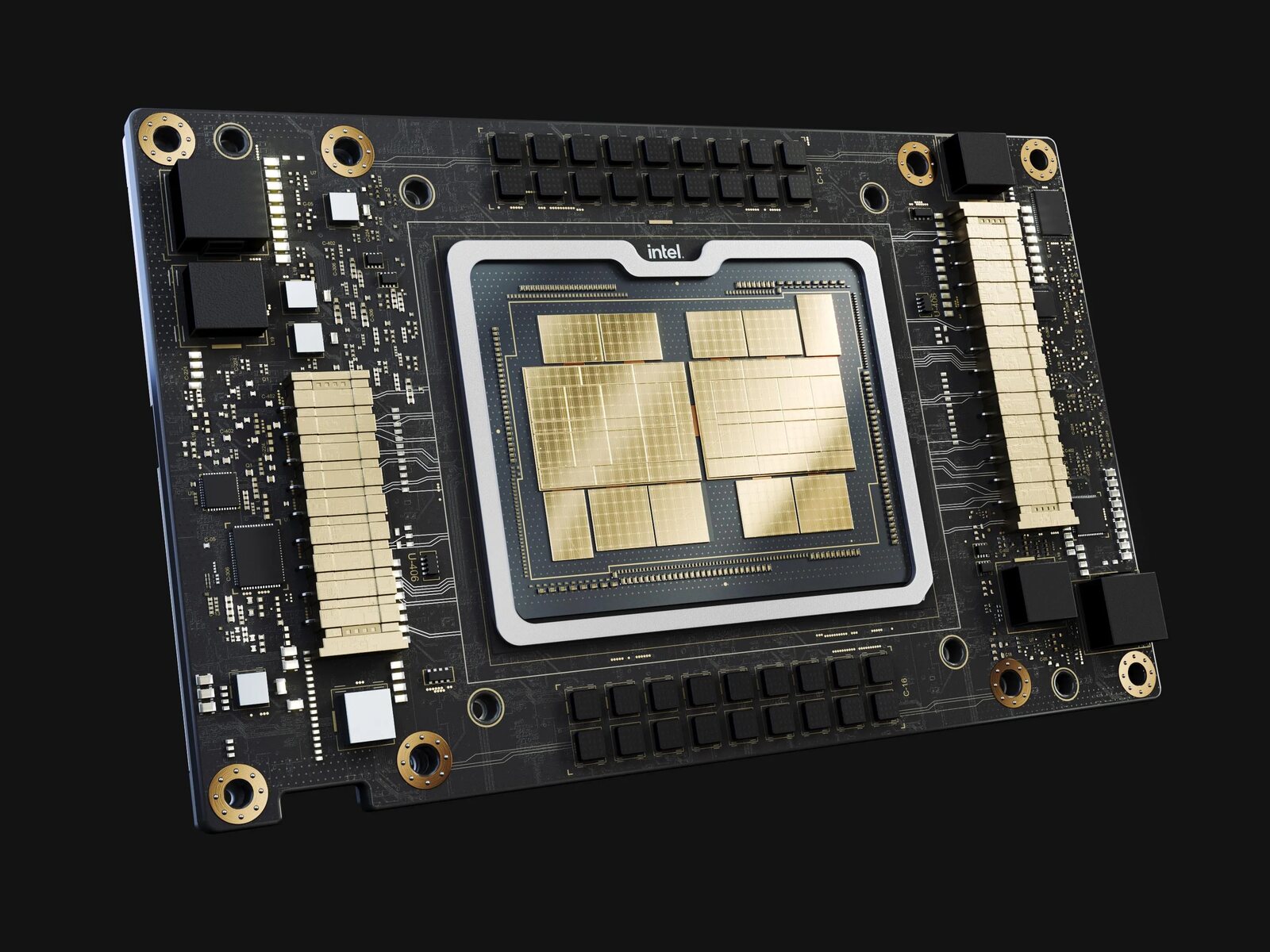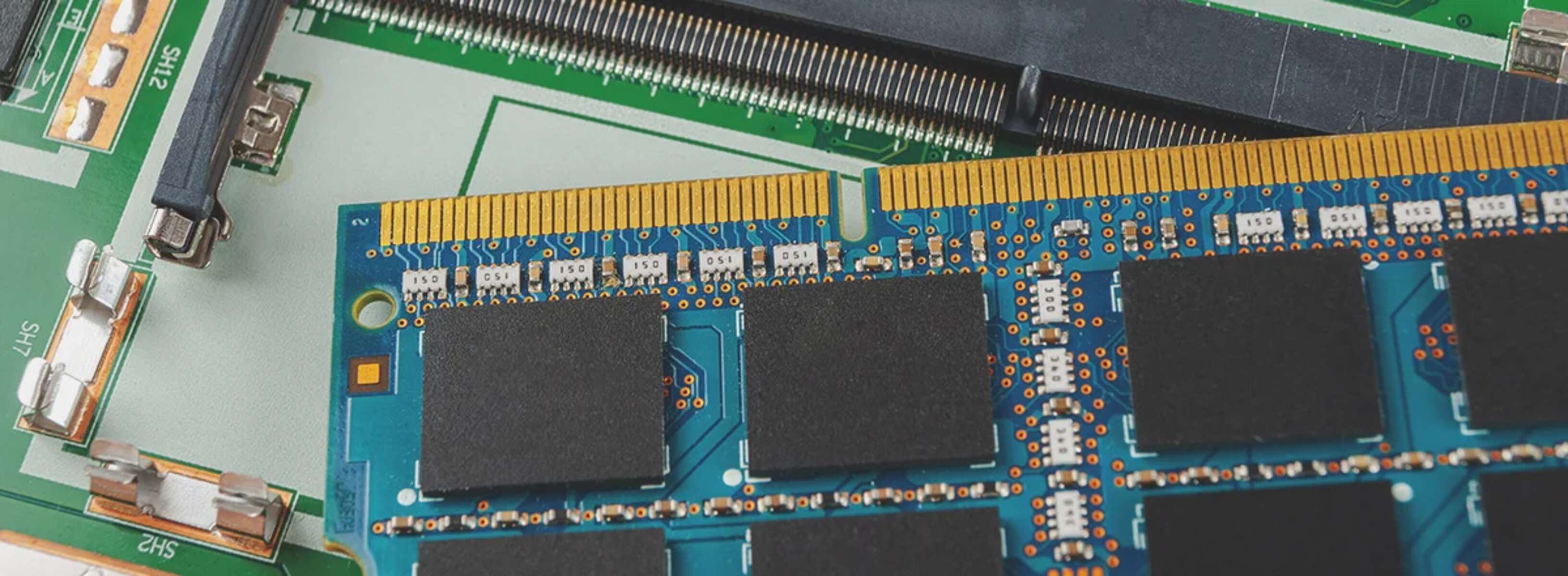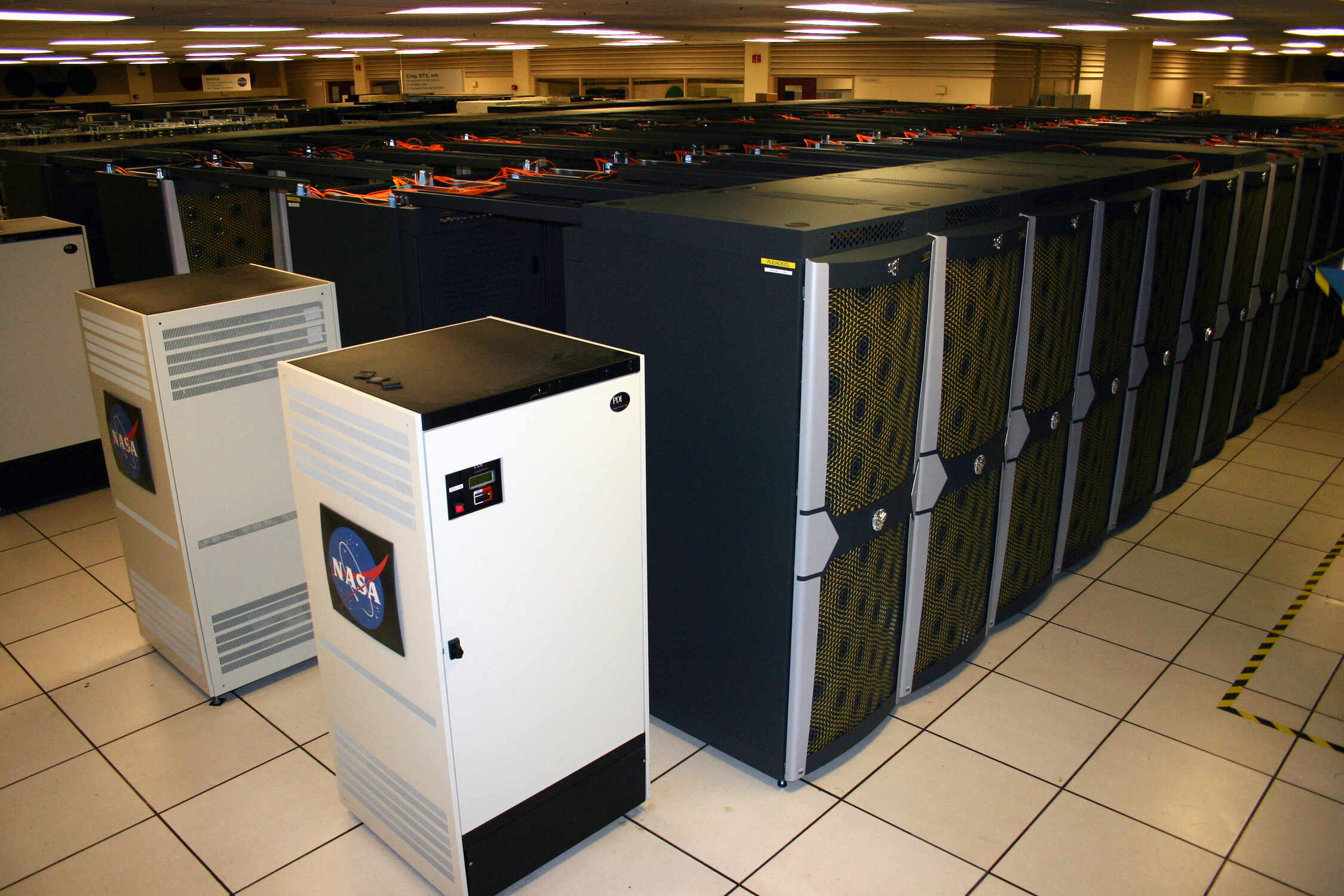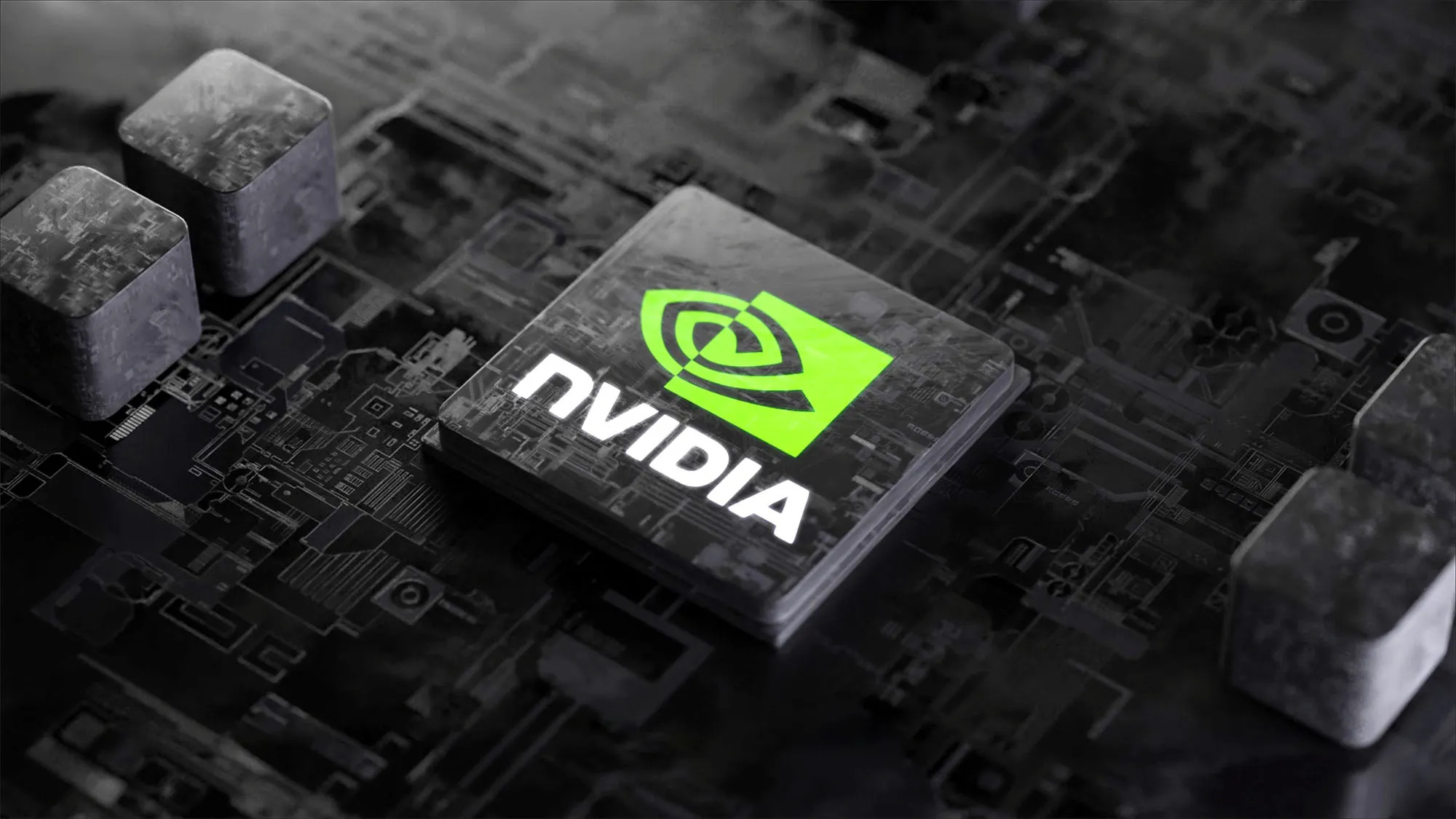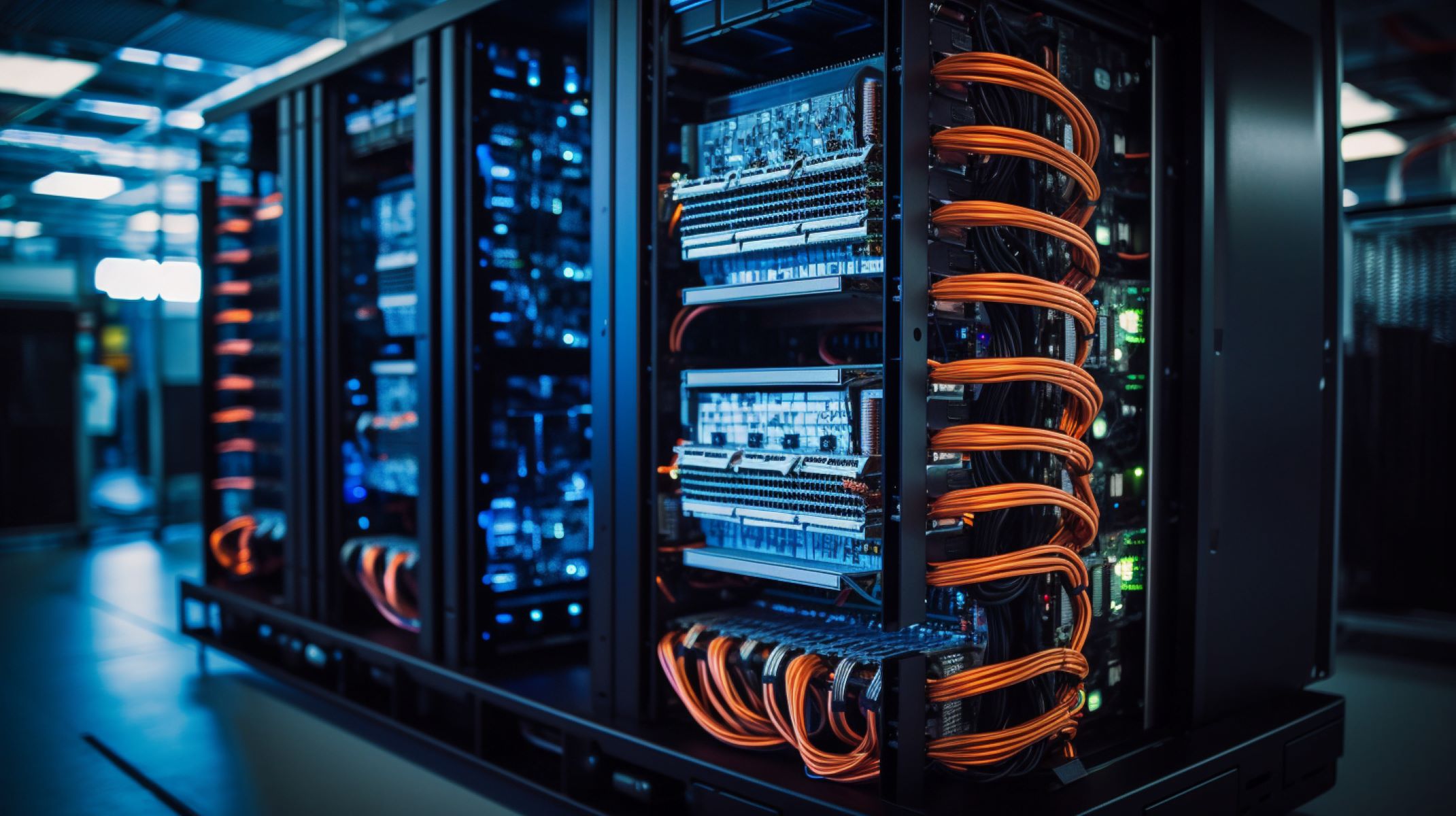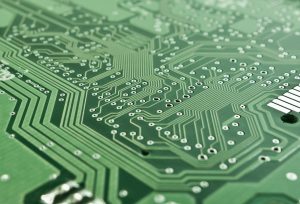Introduction
A supercomputer is a high-performance computing system that is designed to solve complex computational problems at an unprecedented level of speed and accuracy. These powerful machines are used in various fields such as scientific research, weather forecasting, financial modeling, and artificial intelligence. One crucial component of a supercomputer that significantly contributes to its performance is the Random Access Memory (RAM).
The RAM in a supercomputer serves as temporary storage where data and instructions are accessed by the processor during computations. It provides quick and efficient access to information, allowing the supercomputer to process data at an astonishing rate. The amount of RAM a supercomputer has is essential as it determines the size and complexity of problems it can handle.
In this article, we will explore the significance of RAM in supercomputers and delve into the examples, advantages, challenges, and factors that influence the amount of RAM in these powerful machines. We will also discuss the current trends in RAM capacities of supercomputers and how they are shaping the future of high-performance computing.
RAM in Supercomputers
Random Access Memory (RAM) is a crucial component in supercomputers as it plays a vital role in the overall performance and capabilities of these powerful machines. RAM acts as a temporary storage location for data and instructions that need to be accessed quickly by the processor during computations. It provides high-speed access to information, enabling supercomputers to process large amounts of data efficiently.
Supercomputers typically have a significantly larger amount of RAM compared to regular computers. The large RAM capacity allows these machines to handle complex computational problems that require extensive data storage and manipulation. With an extensive amount of RAM, supercomputers can store vast datasets in memory, minimizing the need for frequent read and write operations from slower secondary storage devices.
The RAM in supercomputers is designed to support parallel processing, which is a key feature of these high-performance machines. Parallel processing involves dividing a task into smaller subtasks that can be executed simultaneously by multiple processors. Each processor requires access to the necessary data and instructions, and the high-speed RAM facilitates this by providing quick access to shared data across multiple processors.
Furthermore, the large RAM capacity in supercomputers enables them to handle complex simulations and calculations. Supercomputers are often used for scientific research, weather forecasting, and simulations in various fields such as physics, chemistry, and engineering. These simulations require vast amounts of data to be stored in memory to ensure accurate and efficient calculations.
Moreover, the high RAM capacity in supercomputers allows for the efficient processing of large-scale datasets. Big data applications, such as analyzing massive amounts of genetic data or processing enormous social network graphs, require substantial memory to perform computations quickly and effectively. The large RAM capacity in supercomputers facilitates these operations, resulting in faster and more accurate data analysis.
In summary, RAM plays a critical role in the functioning of supercomputers. The large RAM capacity in these machines enables them to handle complex computations, support parallel processing, and efficiently process large-scale datasets. The advancements in RAM technology have contributed significantly to the development and performance of supercomputers, further expanding their capabilities and applications in various fields.
Examples of RAM in Supercomputers
Supercomputers are known for their immense computing power, which is made possible by their high-capacity Random Access Memory (RAM). Let’s explore some examples of RAM in supercomputers:
-
Summit: Summit is currently the world’s fastest supercomputer, located at the Oak Ridge National Laboratory in the United States. It boasts an impressive total memory of approximately 10 petabytes (10,000 terabytes). This massive RAM capacity allows Summit to handle extensive data sets and perform calculations at an unprecedented scale.
-
Tianhe-2: Also known as MilkyWay-2, Tianhe-2 held the title of the world’s fastest supercomputer from 2013 to 2016. With a memory capacity of around 1.4 petabytes, Tianhe-2 could process enormous amounts of data with remarkable speed and efficiency. This supercomputer was developed by China’s National University of Defense Technology.
-
Frontera: Frontera is a high-performance computing system located at the Texas Advanced Computing Center in the United States. With a total memory capacity of approximately 448 terabytes, Frontera combines powerful RAM with advanced processors to achieve exceptional performance. It supports a wide range of scientific applications and research projects.
-
Piz Daint: Piz Daint is Switzerland’s most powerful supercomputer, situated at the Swiss National Supercomputing Centre. It has a RAM capacity of around 2 petabytes and is specifically designed for highly parallel workloads. Piz Daint is used for various scientific research, including computational physics, climate modeling, and materials science.
-
Sunway TaihuLight: Developed by China’s National Research Center of Parallel Computer Engineering and Technology, Sunway TaihuLight was the world’s fastest supercomputer in 2016. It features a memory capacity of approximately 1.3 petabytes, allowing it to handle complex computations with exceptional speed and efficiency.
These examples demonstrate the significant RAM capacities found in supercomputers. The large amount of RAM enables these machines to process massive datasets, support parallel processing, and tackle complex scientific simulations. With continued advancements in technology, the RAM capacities in supercomputers are expected to increase further, pushing the boundaries of computational research and innovation.
Advantages of Having High RAM in Supercomputers
Having a high amount of Random Access Memory (RAM) in supercomputers offers numerous advantages that enhance their performance and capabilities. Let’s explore some of the key advantages of having high RAM in supercomputers:
-
Increased Computational Power: High RAM allows supercomputers to process larger and more complex datasets. This enables them to tackle computationally intensive tasks with greater efficiency, leading to faster results and improved overall performance.
-
Enhanced Speed and Efficiency: With ample RAM, supercomputers can store a significant amount of data in memory, reducing the need for frequent read and write operations to slower secondary storage devices. This results in quicker data access, minimizing computation delays and improving the overall speed and efficiency of the system.
-
Support for Parallel Processing: High RAM capacity facilitates parallel processing, a key feature of supercomputers. It allows multiple processors to execute subtasks simultaneously, with each processor having access to the necessary data and instructions stored in RAM. This parallelization capability significantly increases the speed of computations and enables efficient utilization of computing resources.
-
Handling Complex Simulations: Supercomputers are often used for scientific simulations involving complex models and massive datasets. High RAM capacity enables supercomputers to store and manipulate these large datasets in memory, allowing for accurate and efficient simulations. This is particularly crucial in fields such as physics, climate modeling, and computational biology.
-
Big Data Analysis: Supercomputers play a vital role in processing and analyzing massive volumes of data. With high RAM capacity, these machines can efficiently handle big data applications, such as analyzing genomic data, simulating financial market trends, or conducting large-scale social network analysis. The large memory allows for faster data retrieval and processing, leading to valuable insights and informed decision-making.
In summary, high RAM capacity in supercomputers offers numerous advantages, including increased computational power, enhanced speed and efficiency, support for parallel processing, the ability to handle complex simulations, and efficient analysis of big data. These advantages make high RAM a crucial component in supercomputers, enabling breakthroughs in scientific research, engineering, and various other fields.
Challenges of Having High RAM in Supercomputers
While high Random Access Memory (RAM) capacity brings numerous advantages to supercomputers, it also presents certain challenges that need to be addressed. Let’s explore some of the key challenges of having high RAM in supercomputers:
-
Cost: The primary challenge of high RAM capacity is the cost associated with it. RAM modules have a higher price per unit compared to other computer components. As the RAM capacity increases, the cost of acquiring and maintaining a high-RAM supercomputer becomes significant. This poses challenges, especially for organizations with budget constraints.
-
Power Consumption: High RAM capacity requires more power to operate, resulting in increased power consumption. Supercomputers already consume a substantial amount of energy, and the addition of more RAM further amplifies their power requirements. Managing power consumption can be complex and expensive, as it involves factors such as cooling systems to maintain the optimal operating temperature of the RAM modules.
-
Heat Dissipation: Along with the power consumption, high RAM capacity generates heat. Heat dissipation becomes a critical challenge as the increased RAM generates more heat, potentially leading to overheating issues. It requires efficient cooling mechanisms, such as advanced cooling systems or liquid cooling technologies, to maintain the RAM modules within their operating temperature range.
-
Hardware Limitations: Incorporating and managing large RAM capacities in a supercomputer can pose hardware limitations. It may require specialized hardware configurations, such as specific motherboards or memory controllers, to handle large amounts of RAM effectively. Compatibility issues and hardware complexities can arise, making it more challenging to maintain and upgrade the supercomputing system.
-
Data Access Latency: Despite the high-speed access of RAM, there can still be latency issues when accessing data. In applications requiring real-time calculations or where data needs to be accessed frequently, even the slight delay in data retrieval from RAM can impact the overall performance. Optimizing data access patterns and implementing efficient caching mechanisms can help mitigate this challenge.
Overcoming these challenges requires careful planning, investment, and continuous innovations in supercomputer design and architecture. While high RAM capacity brings immense benefits, addressing the associated challenges ensures that supercomputers can fully harness the potential of their memory resources and deliver optimal performance.
Factors Affecting the Amount of RAM in a Supercomputer
The amount of Random Access Memory (RAM) in a supercomputer is influenced by several factors that need to be considered during the design and configuration of these powerful machines. Let’s explore some of the key factors that affect the amount of RAM in a supercomputer:
-
Computational Workload: The type and scale of the computational workload greatly impact the required amount of RAM. Supercomputers used for intensive scientific simulations, big data analytics, or complex modeling tasks typically require larger RAM capacities to store and manipulate substantial datasets efficiently.
-
Data Size and Complexity: The size and complexity of the datasets that a supercomputer needs to handle play a crucial role in determining the required RAM capacity. Applications dealing with massive datasets, such as climate modeling or genomics research, need higher RAM capacities to store and process the data effectively.
-
Programming Models and Algorithms: Different programming models and algorithms may have varying memory requirements. Some algorithms are more memory-intensive, requiring larger RAM capacities to perform computations efficiently. Understanding the memory requirements of the algorithms used in the supercomputer’s applications helps determine the appropriate RAM capacity.
-
Parallel Processing Requirements: Supercomputers often utilize parallel processing to improve performance by dividing tasks among multiple processors. The RAM capacity needs to accommodate the memory requirements of each processor to ensure efficient parallel execution. Large-scale parallel processing requires a higher RAM capacity to support the simultaneous processing of multiple tasks.
-
Future Scalability: Supercomputers are long-term investments, and their RAM capacity needs to account for future scalability. Anticipating future advancements in computational requirements and evolving technologies, a supercomputer’s RAM capacity should have room for expansion and upgrades to meet the growing demands of computational workloads.
-
Budgetary Constraints: Financial considerations play a crucial role in determining the RAM capacity of a supercomputer. The available budget may limit the amount of RAM that can be included in the system. Balancing the computational needs with the available resources is essential to achieve an optimal RAM capacity that meets specific requirements while staying within budget limits.
By considering these factors, supercomputer designers can determine the appropriate RAM capacity for a given application or workload. It involves analyzing computational requirements, data characteristics, programming models, parallel processing needs, future scalability, and budgetary constraints to strike the right balance and ensure effective utilization of resources in a supercomputing system.
Current Trends in RAM Capacities of Supercomputers
The field of supercomputing is constantly evolving, with advancements in technology driving higher performance and capabilities. RAM capacity is one aspect that has seen significant development in recent years. Let’s explore the current trends in RAM capacities of supercomputers:
-
Increasing Capacities: RAM capacities in supercomputers have been steadily increasing over time. With advancements in memory technologies and manufacturing processes, it has become more feasible to incorporate larger amounts of RAM into these machines. Supercomputers now boast multi-terabyte, and even petabyte-scale RAM capacities, enabling them to handle vast volumes of data and complex simulations.
-
Hybrid Memory Architectures: In addition to the traditional use of RAM modules, supercomputers are increasingly adopting hybrid memory architectures. This approach combines different types of memory technologies, such as RAM, non-volatile memory, and high-speed storage, to achieve a balance between capacity, speed, and cost. Hybrid memory architectures help optimize the overall performance of supercomputers while accommodating varying memory requirements.
-
Distributed Memory Systems: Distributed memory systems are becoming more prevalent in supercomputers. In these systems, each node or processor has its own dedicated memory, creating a distributed memory pool across the entire supercomputing system. This approach allows for parallel execution and efficient data sharing between processors, effectively utilizing the available RAM across the system.
-
Memory Hierarchy Optimization: To maximize performance, supercomputers are focusing on optimizing the memory hierarchy. This involves efficiently managing data placement across different memory levels, including RAM, cache, and storage. By utilizing faster memory closer to the processor and intelligently transferring data between different memory levels, supercomputers can reduce latency and improve overall computational efficiency.
-
Energy-Efficient Designs: As power consumption and cooling challenges persist, supercomputers are adopting energy-efficient designs to minimize the impact of high RAM capacities. This includes advancements in low-power RAM modules, improved power management techniques, and the integration of efficient cooling and heat dissipation systems. These designs aim to balance performance and energy efficiency, ensuring sustainable operation of supercomputers.
Looking ahead, the trend towards increasing RAM capacities in supercomputers is expected to continue as computing demands grow. Supercomputer designers and researchers are constantly exploring new memory technologies, architectures, and optimization techniques to enhance performance and address the challenges associated with high RAM capacities. This ongoing innovation will pave the way for even larger and more efficient RAM capacities in future supercomputing systems, enabling breakthroughs in scientific research, simulations, and data-intensive applications.
Conclusion
Random Access Memory (RAM) plays a crucial role in the performance and capabilities of supercomputers. The high RAM capacity allows these powerful machines to handle complex computations, support parallel processing, and efficiently process large-scale datasets. With advancements in technology, supercomputers now boast multi-terabyte and petabyte-scale RAM capacities, enabling them to tackle some of the most challenging computational problems.
The advantages of high RAM in supercomputers include increased computational power, enhanced speed and efficiency, support for parallel processing, the ability to handle complex simulations, and efficient analysis of big data. These advantages have paved the way for groundbreaking scientific research, accurate weather forecasting, advanced financial modeling, and cutting-edge artificial intelligence applications.
However, the presence of high RAM capacities in supercomputers also brings challenges that need to be addressed. These challenges include cost considerations, power consumption, heat dissipation, hardware limitations, and data access latency. Overcoming these challenges requires careful planning, investment, and continuous innovations in supercomputer design, architecture, and cooling systems.
The current trends in RAM capacities of supercomputers involve increasing capacities, adopting hybrid memory architectures, using distributed memory systems, optimizing the memory hierarchy, and focusing on energy-efficient designs. These trends aim to maximize performance, improve energy efficiency, and accommodate the growing computational demands of scientific and technological advancements.
Looking ahead, the field of supercomputing will continue to push the boundaries of RAM capacities. Advancements in memory technologies and architectural designs will drive even larger and more efficient RAM capacities in future supercomputers. These developments will enable scientists, researchers, and organizations to tackle grand challenges, make significant scientific discoveries, and accelerate innovation in various domains.







